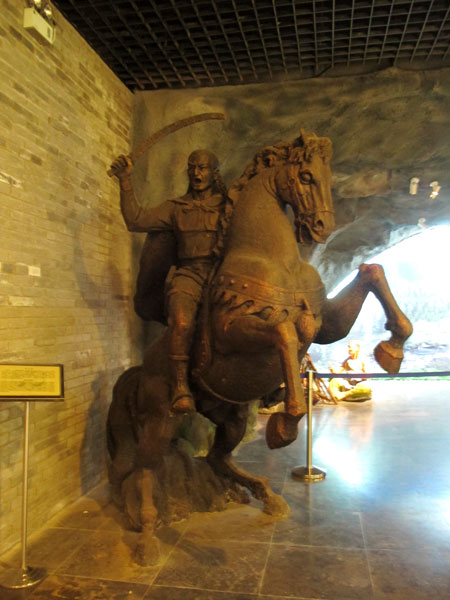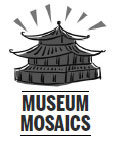Disappeared, not forgotten
 0 Comment(s)
0 Comment(s) Print
Print E-mail China Daily, January 4, 2013
E-mail China Daily, January 4, 2013
|
A Xianbei warrior on horseback guards the entrance to Shengle museum, which honors the Xianbei ethnic group. Wang Kaihao / China Daily |
Shengle Museum is dedicated to the nomadic Xianbei ethnic group that formerly dominated North China, reports Wang Kaihao, who finds plenty to interest the visitor.
Though the snow lies thick over the prairie in Inner Mongolia there is still plenty to see in Horinger county, on the outskirts of the autonomous region's capital Hohhot.
Even so, if it was not for a local guide, I would have missed the plain-looking Shengle Museum by the side of the road.
There is a statue of a warrior on a horse at the entrance of the museum, which uniquely gives an introduction to the nomadic Xianbei ethnic group that dominated northern China for a significant period after the third century BC.
Covering 3,558 square meters, the museum was built in 2007 to celebrate the 60th anniversary of the establishment of the autonomous region.
The hall, which is partly underground, has a giant wall decorated with frescos and paintings, most of which have Buddhist themes.
The Xianbei people established the Northern Wei Dynasty (386-534) that ruled much of northern China and based itself in Horinger, which was then called Shengle.
Unlike many other museums that exhibit replicas, most of the items here are originals.









Go to Forum >>0 Comment(s)